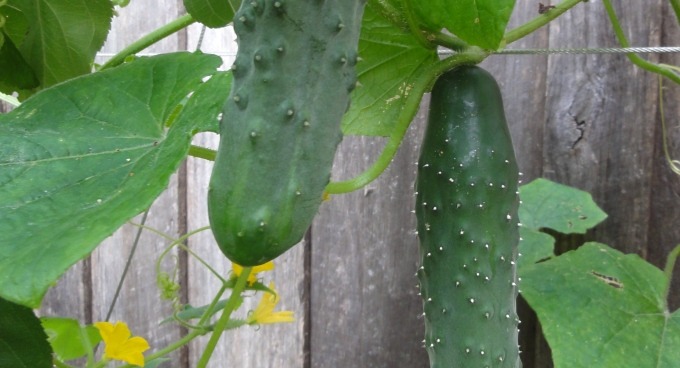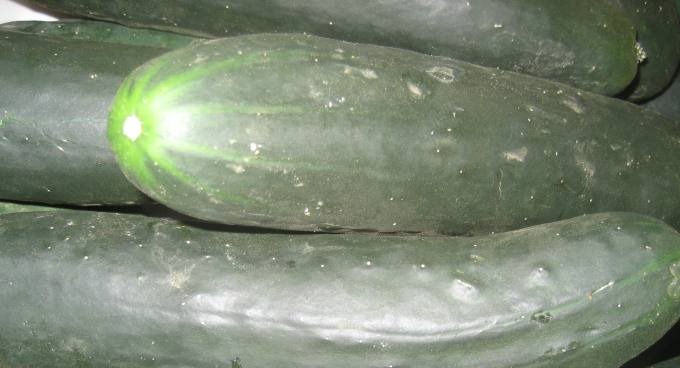Cucumis sativus
Fresh, pickled or as an ingredient in many a dish and used the world over, cucumbers have a lovely place in the summer garden. Although they need a fair amount of love and tenderness they reward the grower with beautiful fruit. Home grown cucumbers are usually a bit knobbly and may not be as perfect as the shop bought, but they make up for that in their taste and texture.
Planting Schedule
Warm Areas: July to March
Temperate Areas: September to January
Cool to Cold Areas: October to December
Location
Cucumber’s can be a bit fussy about position. In cool zones, they love nothing more than a spot in full sun. However, in areas with hot summers, a little tenderness and shade will encourage your cucumbers. You can actually grow cucumbers in about 30% – 50 % shade in places where the air is warm. A simple shade covering, temporary or something more permanent will protect the plants from the harsh sun as well as reducing the risk of scarring the fruit, (it might have the added benefit of protecting your plants from pests too).
Another thing to consider with cucumbers is that they are essentially vines and they need to climb. Pick a position that provides them with the right amount of sun and also gives them a bit of support. Fences and trellis do fine as do wire supports. Alternatively you can use sweet corn as a “living stake” for cucumbers. It makes the most of the space in your patch and is a sustainable solution for staking. This works best where there is good airflow ; and these two are excellent companions.
Soil
Good soil preparation is vitally important. Cucumbers need a friable (loose), well drained soil, full of organic matter, especially compost. Plant in a mound about 40cm across, with two cucumbers to each mound. This acts to improve drainage. Add a good straw mulch to help keep the roots cool, stop the soil drying out and prevent the fruit come into contact with the ground, helping to prevent fungal diseases, (more on that later).
Feeding
Being a fruiting plant, cucumbers require a reasonably high level of feeding, especially when it comes to fruiting. This means that they will pretty much take in whatever food is available and this is where you need to be a bit careful. A good amount of compost is the best starting point. Anything stronger than this can encourage a lot of healthy leaf growth but does not encourage fruiting. Give cucumbers a feed at planting time with either watered down worm wee or a seaweed based liquid feed. Feed again when you see the first little fruits appear (they look like tiny gherkin).
What about the Water?
Cucumbers present a convincing argument for drip-irrigation and rainwater tanks – they are thirsty! Installing drip irrigation in your produce patch should always be considered, but it’s almost a necessity with cucumbers. Drippers on top of the soil, under a nice 5cm – 7cm layer of mulch and directed around the base of your plants is perfect. Its puts the water exactly where it’s needed… the roots!
Cucumbers don’t respond well to other methods of watering as they are susceptible to fungal diseases if their foliage is wet. Don’t let them dry out either or you may end up with bitter or dry fruit. If you must hand water cucumbers, make sure you do it first thing in the morning ensuring that you are aiming mainly at the root zone of the plant avoiding the foliage.
Harvesting
The variety of cucumber you chose will determine when it’s ready to pick and a number of varieties that have multiple uses. If you want gherkins, pick the long, green cucumbers when they are about 5cm – 10cm in length. Alternatively, these can be left on the plant and picked when they are 15cm – 20cm for tasty “salad” cucumbers. Same deal for Lebanese cucumbers. The round apple shaped cucumbers are best picked when they are about tennis ball size. Cucumbers generally take about 8 – 10 weeks to ripen, stretching out to 12 – 14 weeks for apple cucumbers. Make sure you monitor your vines regularly; it’s better to harvest when cucumbers are under-ripe, rather than over-ripe.
When harvesting it’s best not to pull the fruit off the vine. Pulling them off can snap the vine in half and seriously jeopardise the rest of your crop. Cut the cucumbers off with a sharp pair of clean scissors or secateurs, making sure you leave a bit of stem attached to the fruit.
Pests and the Rest
Cucumbers, like many vines, are susceptible to fungal infections. Prevention is much better than a cure so; clean straw mulch, drip irrigation, good air movement, a trellis or support and root level or early morning watering should deter fungal spores.
Another issues faced by the cucumber is lack of bee activity to pollinate the flowers. Encourage bees into your patch by planting a diverse selection of flowering companion plants, edible and non-edible. This will hopefully reduce the use of unnecessary pesticides in the garden that often wipe out the good guys as well as the bad. You can hand pollinate your cucumbers if you are concerned; simply pick a male flower (one without a small fruit forming at the base) and touch it lightly onto the centre stem of the female flower.
Final Tip
Give your cucumbers a little pinch! “Pinching out” is a term that just means removing wee bits of the plants to encourage better growth and fruiting. Pinch out growing tips when they have formed about five to seven leaves; also pinch out the laterals (side shoots) that have produced a number of leaves (about eight to ten) but no female flowers ( the ones with the miniature cucumber where the petals start).
Photos
Photos taken by Elaine Shaulle (SGA) and Mary Trigger (SGA)
Related Articles:
Garden Journaling – Slow down to tune in.
As we move through the year and our gardens evolve, there's something magical about documenting the journey. Garden journaling is an art that enables…
The Importance of building soil health for a biodeverse, productive garden
Creating a thriving garden that not only sustains itself but also contributes to the broader ecosystem requires more than just sunlight and water.…






